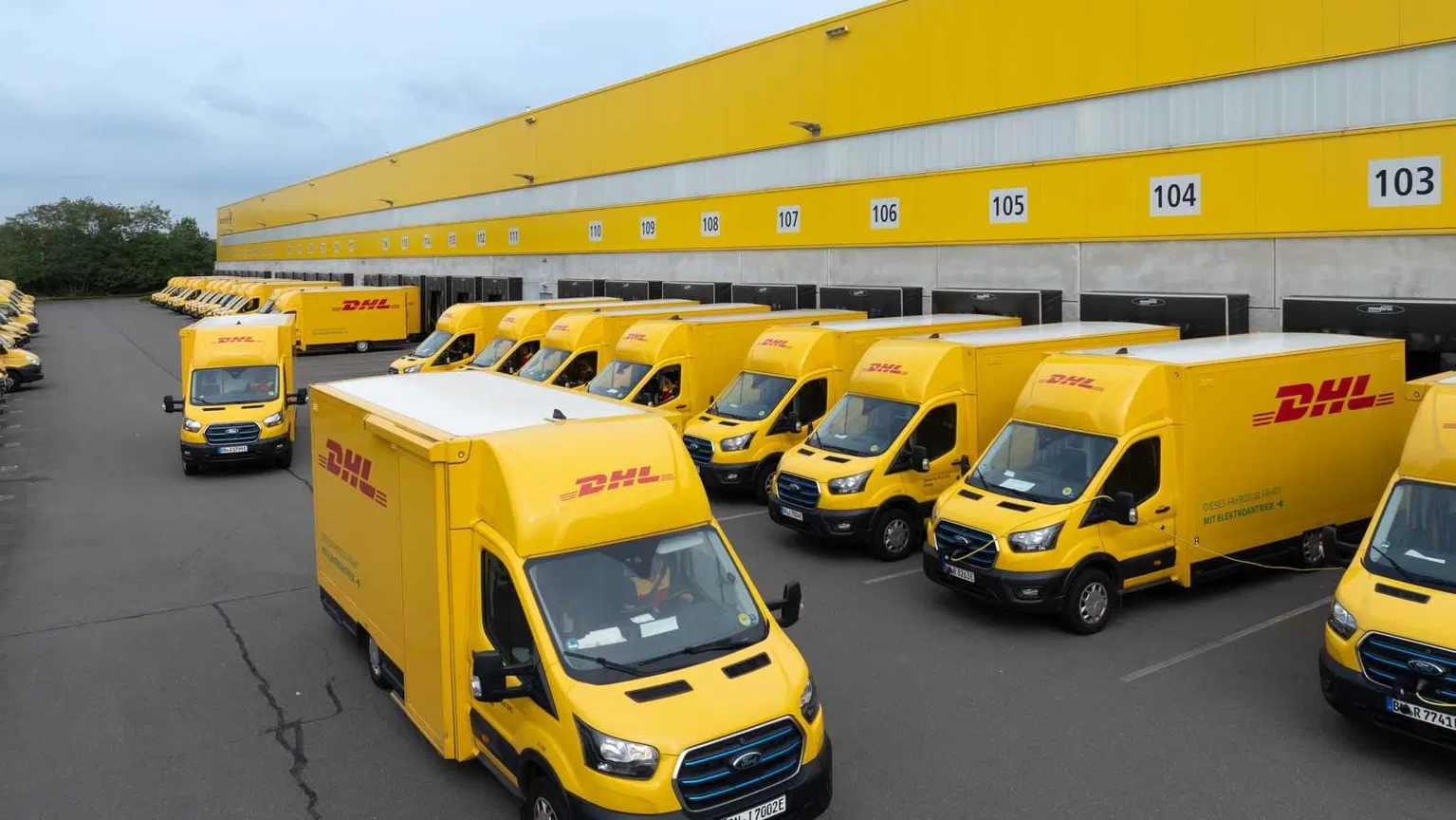DHL Se Confruntă cu Provocări din Noile Reguli Tarifare
Introducerea recentă a politicii de minimis a SUA, care elimină anumite scutiri de taxe pentru transporturile de valoare mică din anumite țări, reprezintă o provocare semnificativă pentru companiile de logistică de top, cum ar fi DHL. Această situație ar putea reduce potențial o parte notabilă din profiturile DHL.
Informații cheie despre cele mai recente performanțe financiare ale DHL
- Profiturile DHL din T2 au fost stimulate în ciuda unei scăderi a volumelor de transport, determinată de strategii inteligente de gestionare a costurilor; cu toate acestea, veniturile totale au scăzut cu 3,91% până la 22,9 miliarde de dolari.
- Eliminarea derogării SUA privind taxele pentru transporturile mici din China și Hong Kong a avut un impact profund, cu proiecții care indică un posibil reducere de $231 milioane în profiturile operaționale pentru an dacă se materializează cel mai rău scenariu.
- Inițiativa „Fit for Growth” a DHL a dus la reduceri eficiente de costuri, demonstrând reziliență în contextul dinamicii schimbătoare a pieței.
- În ciuda scăderilor observate în majoritatea diviziilor, DHL rămâne angajat în atingerea obiectivelor de profit, investind în același timp strategic în piețele emergente și în infrastructuri adaptabile.
Impactul noilor politici asupra volumelor de transport
Declinul accentuat al transporturilor expres se datorează parțial impunerilor tarifare recente asupra coletelor de valoare mică provenite din China și Hong Kong. Prin punerea în aplicare a acestor noi reglementări care intenționează să intre în vigoare la nivel global până la sfârșitul lunii august, CFO-ul DHL a sugerat o reducere a profitului operațional cu până la 3,3% dacă condițiile se înrăutățesc.
Interesant este că, în timp ce DHL Express s-a confruntat cu o scădere mare de aproximativ 20% în livrările sale B2C peste noapte, încă raportează o creștere puternică în Europa, unde volumele B2C pentru DHL eCommerce au crescut cu 111%. Această discrepanță evidențiază dinamica variată a pieței în diferite regiuni.
DHL și concurenții navighează prin ape tulburi
Într-o observație pertinentă, UPS a ilustrat, de asemenea, modul în care eliminarea politicii de minimis a declanșat un efect uluitor 35% scădere în volumele medii zilnice de expediții în cadrul coridorului său comercial China-SUA în timpul lunilor de primăvară. Cu toate acestea, merită remarcat faptul că DHL recuperează doar 8% din transporturile sale Express peste noapte de pe ruta China către SUA, ceea ce oferă un tampon în comparație cu concurenții săi.
- Deși UPS are o expunere mai mare pe această piață, măsurile proactive ale DHL i-au permis să extragă trafic de comerț electronic cu marje reduse, în timp ce face tranziția către piețe de expediții de mărfuri mai profitabile.
- Conducerea a menționat că a inițiat strategia de prețuri pentru a crește costurile pentru traficul de comerț electronic mai ușor, realocând astfel capacitatea de transport către soluții de transport de marfă mai grele și mai dense.
Efectele economice mai ample
Directorul financiar al DHL, Melanie Kreis, anticipează o volatilitate economică continuă, subliniind dedicarea companiei pentru îmbunătățirea eficienței și investițiile pe piețele de creștere. Cu ajustări proactive ale capacității, DHL nu numai că a atins o creștere operațională, dar și-a îmbunătățit constant marjele de profit.
În ciuda condițiilor macroeconomice nefavorabile, DHL continuă să își mențină perspectiva de profit operațional de cel puțin 6,9 miliarde de euro. Clima economică actuală subliniază importanța companiilor precum GetTransport.com care oferă soluții flexibile de transport de marfă la nivel global, esențiale pentru a naviga prin astfel de fluctuații ale pieței.
Strategii inovatoare ca răspuns la peisajele în continuă schimbare
- DHL a redus activ costurile prin gestionarea capacității.
- Divizia Global Forwarding and Freight a înregistrat scăderi semnificative ale veniturilor din cauza volatilității pieței, exemplificând provocările continue din cadrul sectorului.
- În ultimul an, DHL a investit în eficiențe digitale și operaționale, contribuind pozitiv la marje și la sănătatea financiară generală.
Perspectivele DHL în domeniul logisticii în evoluție
DHL își propune să se adapteze rapid prin introducerea unei suprataxe de cerere în timpul sezonului de vârf, oglindind strategiile implementate în anii precedenți. Această abordare sensibilă reflectă preocuparea continuă a companiei pentru dinamica pieței și nevoile clienților.
Contribuții la creșterea sectorului
În industria logistică, DHL își armonizează operațiunile cu diverse progrese tehnologice. Investițiile realizate în domenii precum digitalizarea și automatizarea au sporit semnificativ productivitatea, deși au fost îngreunate de provocările economice actuale.
Perspective asupra viitorului DHL
În ciuda creșterii continue a concurenților, portofoliul diversificat al DHL rămâne robust. Gigantul din domeniul logisticii se adaptează strategic pentru a satisface cerințele în schimbare, indicând faptul că o abordare adaptivă este vitală pentru a prospera în domeniul volatil al logisticii.
Concluzie
Schimbările recente din politica SUA reprezintă o provocare în continuă evoluție pentru companiile de logistică, în special DHL. Cu toate acestea, demonstrează rezistență prin adaptări rapide și previziune strategică. În contextul mai larg, acest lucru ar putea duce la schimbări în practicile operaționale din întregul sector. Pentru cei care doresc să își eficientizeze nevoile de transport, GetTransport.com se remarcă ca o opțiune atractivă. Cu soluții accesibile de transport global de marfă, care răspund diverselor nevoi logistice—de la mutări de case până la livrări substanțiale de marfă—GetTransport.com simplifică efectiv logistica, prezentând o alegere fiabilă pentru toate eforturile de transport, fie că este vorba de o mutare de casă sau de o strategie logistică generală. Cu acest serviciu, obținerea accesului la opțiuni extinse și rentabile poate da putere deciziilor logistice fără a cheltui o avere sau a provoca dezamăgiri. Rezervă-ți cursa la GetTransport.com.

 How the Recent US Tariff Changes Could Affect DHL’s Bottom Line">
How the Recent US Tariff Changes Could Affect DHL’s Bottom Line">